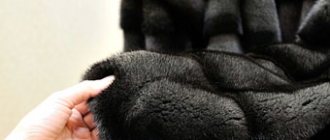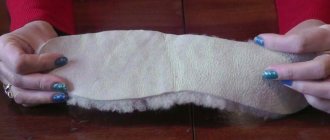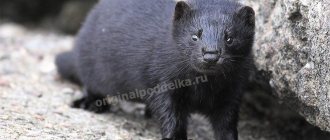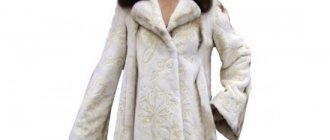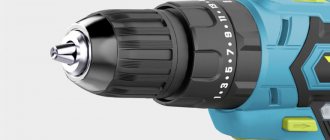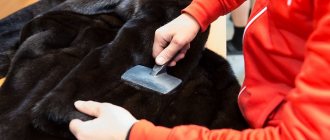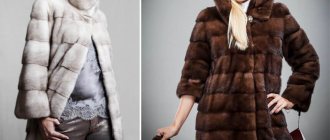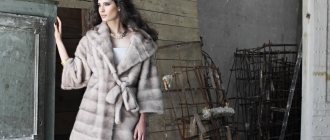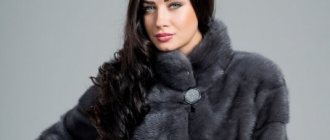07/31/2019 Category: Hair removal
As you know, in the harsh Russian frosts, a fur coat provides the best warmth. It reliably protects from the wind and allows you to stay in the cold for a long time. And of course, it pleases the eye of its owner! Especially if it is made from real fur. Such products are very popular among Russian women, and unscrupulous sellers often take advantage of this, trying to sell a fur coat made of fake fur or less valuable fur for a large sum, passing it off as expensive.
Where to buy
You can buy a fur product in a specialized store or company showroom. Here, all samples will be accompanied by quality certificates and a guarantee. So you don’t have to doubt the authenticity of the fur. However, in such a place you will overpay for the brand.
You can make a cheaper purchase at a clothing market or small shops. In this case, it is better to contact those who have been in this business for several years and have established themselves as a reliable seller.
Comments and Reviews
Add a comment Similar materials When will faux fur replace natural fur? The main reason for the refusal of natural fur by fashion brands Choosing an inexpensive fur coat and fur vest for the winter How to choose good fur 12 colored fur coats for the winter 2021 Fur coats and other fur products 2016-2017 from J.Mendel
The extraction of skins is now carried out mainly by breeding animals in cages on farms. Since arctic foxes living in nature are listed in both the Russian and international Red Books, and hunting, especially of their blue subspecies, is prohibited.
Features of real fur
No matter how much the seller praises his product, it is still better to see for yourself its quality.
- Today we have learned to produce synthetic fur of excellent quality, which is hardly distinguishable from the real thing. Run your hand through the fur. It should be smooth and tender to the touch, but at the same time dense. It's like ironing silk fabric.
- Crumple the edge of the product. The area that has easily restored its shape will indicate the authenticity of the fur.
- Smell the product. It should smell like tanned leather, but not like paint or synthetics.
- Under the lining there should be a stamp from the manufacturer of the product with information about the origin of the fur.
A fur coat made of natural fur is more of a status item than protection from the cold. A warm jacket or coat can easily cope with the latter. Therefore, you need to approach the choice of a fur coat as responsibly as men approach the choice of a new car (for them this is also a status thing). That is, it is important not only to choose a style, color and specify the price, but also to make sure that the fur of the product is really natural and well-made.
Arctic fox skin colors
Arctic foxes come in white and blue, which in turn are divided into shades of varying intensities.
White and blue fur
Fur is often dyed, so you can find it on sale in the most unimaginable colors and shades. If the arctic fox is used as a trim for the hood or collar, then the fur is dyed to match the color of the main product.
The natural shades of the Arctic fox are as follows:
White or pearl - the fur is completely white, sometimes interspersed with black guard hairs.
Platinum - white fur with gray tips of the guard hairs, and a darker stripe closer to the ridge.
Silver - in color it resembles the fur of a silver fox.
Blue – The color varies from greyish-white to grey, with dark tips of the guard hairs. Sometimes because of this feature this arctic fox is called veiled.
Where to start?
When the decision to buy a fur coat has been made, you need to answer several important questions:
- Where to buy? It is best to purchase this expensive product in a specialized salon or store. Study customer reviews of the outlet, make sure that the salon has been operating for several years and has earned a certain reputation. A reputable store must provide a guarantee on the product for a period of one year (usually). If during this time any shortcomings appear, you can exchange the fur coats or get your money back. If you buy it on the market, even if the product falls apart on the same day, it will be difficult to correct the situation.
- When to wear it? A short fur coat is suitable for traveling in a car, but for long walks in the fresh air you need something longer.
- Price issue. The longer the fur coat lasts, the more you will have to pay for it. Fur differs not only in appearance and quality of manufacture, the wear time of the product will depend on the “pedigree” of the skin. The longest-lasting fur coats are made from otter. Then in descending order: beaver, raccoon, mink, astrakhan fur, nutria, muskrat. The worst types of fur to wear are rabbit, hare and goat fur.
Selection rules
It is important to know that there is a division into “summer” and “winter” fur. In winter, animals develop a thick undercoat, which is why responsible producers choose only “winter” fur.
There is also the fur of wild animals and those grown in nurseries. “Wild” fur is much more valuable. For example, a fur coat made from Argentine nutria (only wild animals are used) will be more expensive than a similar product from another country.
Be sure to pay attention to the flesh (this is the back side of the skin). In a good product, you always have access to the underside of the fur plate and you can determine its quality. The flesh must be light, almost white. A yellowish tint indicates that the fur is old and will quickly lose its appearance. In addition, a well-cured skin will always be soft and elastic. If the flesh “rattles”, leave the product in the store.
Don't be shy to smell the fur coat - any unpleasant smell (for example, the smell of rancid fat) should make you refuse the purchase.
Study the photos, take the time to visit several different salons, talk to sellers, find out expert reviews - all this will help you make your choice.
Artificial or natural?
The chemical industry does not stand still, and it is often difficult to determine whether the fur in front of you is artificial or natural. However, there are still differences:
- Natural fur shines brighter, is softer to the touch, lighter in weight, has a richer color and thicker pile.
- When deformed (twisted, compressed), natural leather quickly returns to its original shape.
- Try to lift products of artificial and natural origin that are approximately the same in style. The difference in weight will be immediately noticeable - animal fur is much lighter.
- There is another way to identify faux fur, but it is somewhat risky: you need to pull out a few hairs from some inconspicuous place on the product and set them on fire. Faux fur will give off a characteristic smell of burnt plastic, melt and, as it cools, harden. Natural fur will leave the smell of burnt hair and crumble into ash. Unfortunately, sellers are not very happy with such experiments.
- A safer method of determination for the buyer and the product is to part the pile and carefully examine the base. If you notice a fabric that looks a little like knitwear, it’s faux fur. The natural one grows in small bunches, you can easily see them.
But even the last two tests do not provide a complete guarantee. The most reliable way is to carefully read the label on the product. The manufacturer, who has nothing to hide, must indicate from what raw materials the fur coat is made. Of course, you can only trust labels in trusted stores. And you will have to pay more for calm nerves.
How does the fur of different animals differ?
Visually it is not difficult to determine the difference, for example, between an arctic fox and astrakhan fur. But what if the products look similar to the eye, especially to a non-specialist? Carefully study the hairs: they differ not only in color, but also in length, thickness and tactile sensations.
- How to recognize a fur coat from a mink - the fur is elastic, all the hairs are the same length, fit tightly to the flesh, the hairs are laid “hair to hair”, the overall length of the fur is small. The shiny and smooth surface of the fur and the presence of thick undercoat mean good dressing and use of “winter” fur. Such a product can please the owner for ten years.
- The rabbit has very pleasant, soft-to-touch fur. The term “gentle” suits it well. A rabbit fur coat is cheaper than others, sometimes significantly. But it will not serve more than a couple of seasons.
- Mouton is a sheepskin treated in a special way. Thanks to processing, a product made from this fur can last up to ten years without losing its appearance, is not afraid of moisture and retains heat well. You can recognize a fur coat made from a mouton by its evenly trimmed, dense, well-smoothed, rather short fur. This material allows you to experiment very boldly with coloring. As a rule, mouton products are not very expensive, but the models can be very impressive.
- The fur of the black and brown fox is beautiful and wears very well. The hair of a silver fox is easy to identify - it is colored in three colors that fade into each other. Gray at the base fades to a white middle and black tip. This is a very valuable fur, it is voluminous and soft, with a thick undercoat.
- The not very common fur of the fox dog can be recognized by its two-tone color. It looks similar to the silver fox, but is much cheaper. Unscrupulous sellers sometimes pass off a fox dog as a silver fox (they are distant relatives).
- Nutria fur should not be confused with the more expensive beaver. They look a little similar in appearance, but the beaver is much fluffier, while the nutria has almost no undercoat. Beaver fur has a bright shine and elasticity.
Modern technologies for tanning hides and processing natural fur make it possible to achieve a very impressive appearance of fur products.
Some types of cheap fur are sometimes subjected to such processing as dyeing, tinting, cutting, trimming, after which the fur becomes similar to more expensive fur, imitating its appearance. For example, the fur of a rabbit, marmot or honor is sometimes passed off as natural mink.
In this article we will tell you how to distinguish natural mink fur from imitation and make sure of its quality.
Marmot.
A marmot, well-dressed and dyed to match the mink's natural dark brown fur, can indeed be mistaken for a mink at first glance. But if you pay a little more attention to it, you will notice quite obvious signs of a fake:
- The length and thickness of the guard hairs of the marmot are not the same - this is noticeable if you stroke it against the grain. Mink has a uniform spine over the entire surface of the skin.
- This same technique will reveal that the groundhog's fur becomes shaggy and does not return to its original state. Mink fur is more flexible and is practically unaffected by creasing.
- A marmot painted to resemble mink will have a bluish-violet tint, which is noticeable in bright light, while dark natural mink always has a brown tint and an even silky sheen.
Rabbit.
Most often, a sheared rabbit is passed off as a plucked or sheared mink, taking advantage of the similarity between the mink's underfur and the rabbit's fur. The rabbit is almost devoid of underfur, but if you cut it, it will look like a mink.
Mink underfur is elastic and does not wrinkle, while thin, damage-prone rabbit fur is much thinner and softer: it is easy to wrinkle, after getting wet it loses its appearance, and the skins quickly “bald” during wear.
Honorik.
This is a close “relative” of the mink - an animal obtained by crossing a mink and a ferret. Currently, it is bred in few places, but it is still worth being able to distinguish honorik fur from mink:
- If a fur coat is made from whole honorik skins, you will be struck by their large size, because honorik is noticeably larger than mink.
- The color of the Honorik's fur is distinguished by a large difference in the shades of light underfur and dark awn. The color of the mink underfur is slightly lighter than the outer fur or has the same color.
Have you come to choose and buy a natural mink fur coat? Here are some tips on what to look for when assessing its quality:
- Look at the fur.
Natural mink fur has a uniform silky sheen. The guard hairs are of equal length, fluffy, and do not form icicles. - Spread the underfur:
it should be equally dense, and the inner skin (skin) underneath should be light, unless the fur coat is declared as dyed. - Stroke the fur with your palm
along the fur and against the fur. Natural mink is silky to the touch, the spine does not prick, and the fur pressed against the fur quickly returns to its original appearance. - Shake your fur coat.
The guard fur should not fall off, and the flesh should not crunch.
The most reliable way to choose high-quality natural mink is to make a purchase in a store that has a long-standing reputation as a reliable seller of high-quality mink coats. You can always contact the administration of such a store directly regarding assortment and quality issues!
also draws your attention to the control identification marks with electronic chips that are included with each fur coat sold under the Fur Academy brand. The chips contain comprehensive information about the origin of the fur coat that you are going to buy, which means they guarantee factory production and high quality of the product.
A real high-quality fur coat is a woman’s pride. A real fur coat is evidence of her wealth, both feminine and material. Finally, a real fur coat will never allow you to freeze even in the most severe cold.
But how to choose it - a real fur coat? How not to make a mistake by purchasing a poor fake instead of real fur? Remember! Our selection of important recommendations will help you:
Tip #1. What should you pay attention to first?
The best way to start choosing is by touch. Touch the fur, remember it with your hands. If it's nice and soft, dry and smooth, that's what you need!
To make sure of the strength of the future shower coat and its durability (after all, a fur coat is not bought for one season!), tug on the wool. They must “sit” to death! High-quality wool will not come out if you rub the fur coat with a cloth. Pay special attention to this moment - you don’t want to walk around in the middle of winter in a bald fur coat!
Check the flesh - this is the back side of the skins. To do this you will have to look under the lining. Undyed fur is white, and a yellowish tint indicates that the fur is old. In addition, good “fresh” fur shines and shimmers in the light, unlike dull, low-quality fur.
Ignore the smiles of the seller - continue to study your future purchase. You can blow on the fur and make sure that all the fibers straighten out immediately, or squeeze it in your hand and sharply release it - the result should be the same.
A good fur coat does not smell. This is an axiom. Any foreign smell is a reason to be wary.
The bright color of the fur coat you like is not a guarantee that the new thing will remain as bright in the future. If you really want to dress up in a fashionable green or scarlet fur coat, rub it with the same white piece of cloth. If the fabric is not dyed, there is hope that the color of the fur coat will not change.
Tip #2. Where to buy a fur coat?
The answer is simple and completely unambiguous - in a specialized store or a reputable fur salon that has been operating for several years. The warranty period in the case of a fur coat lasts almost a whole year. Why refuse the opportunity to exchange low-quality goods during this period? If you decide to buy a fur coat at the market, no one will exchange it for you. And he won’t return the money!
Tip #3. Which model should you choose?
In addition to fashion, there is also such a thing as convenience. For example, if you plan to walk in a new fur coat with a small child in a stroller, you will need a long and very warm new coat made from beaver, male mink, fox or arctic fox. For ladies who are constantly driving, a short fur coat would be a good option - it does not interfere with driving. A fur jacket made from short-haired mink or otter fur is also suitable.
Tip #4. Should I buy a coat made of dyed fur?
It happens that a fur coat is dyed for only one purpose - to disguise defects in the workmanship. In such cases, a dark color is usually used. Of course, you shouldn’t buy such a fur coat.
However, there are product categories that simply need to be painted. For example, this includes a fur coat made from the skins of wild nutria, which are not very attractive in color and need to be refined.
Don’t forget that fur coats in bright colors are now in fashion, which can only be achieved through dyeing.
Modern technologies make it possible to achieve high-quality coloring, therefore, when buying a product from a reliable store, you should not worry about the durability of the bright color.
Tip #5. Trader secrets: how to expose a rabbit?
It's unpleasant to realize that you bought a fake. At the same time, the fur may be natural, but not at all what you expected, and most importantly - cheaper. For example, a rabbit often has to “play” the role of a mink or chinchilla. It’s not difficult to expose him, you just need to know a couple of secrets.
A real mink has rough fur, while a rabbit has very soft fur.
A real chinchilla is cool to the touch. If you are not too lazy to study the undersides of the skins, you will be convinced that chinchilla skins reach a length of only 20-25 cm, while rabbit skins are longer - up to 70 cm.
Instead of a mink, they may give you a marmot. Cheap Ukrainian mink is often passed off by sellers as more expensive Canadian mink. Signs by which you recognize a fake:
The marmot's fur is slightly prickly, its hairs are of different lengths - unlike mink.
The Canadian mink is very fluffy, and the skins of its Ukrainian “sister” have rather scanty down.
To avoid buying a relatively inexpensive fox fur coat instead of a silver fox, just count the number of colors in the fur. Each silver fox fur starts at the base with a gray color that fades to white, ending in black. Foxdog is two-colored.
A raccoon and a raccoon dog are basically related, but that's not enough to warrant paying the same amount of money for them. The raccoon is noticeably more expensive because its fur is warmer due to the comparative rigidity of the spine and down. The fur of a raccoon dog is softer, but retains heat less well.
For the warmest beaver coat, the seller can sell dyed nutria, which has poorer fur, not so thick and dense.
Tip #6. A few more tricks
Can you easily look behind the lining? This means that the fur coat is of high quality - the manufacturer does not consider it necessary to hide anything from the buyer. In a company store, it’s not a sin to ask the seller to slightly rip the lining - this is the only way you can be sure of the quality of the seams.
A fur coat without flesh (the back side of the skin) is not a fur coat. In any case, it has no right to be called a natural fur coat. Well-made flesh, no matter how you shake it, will not creak or crunch. The most she can make is a quiet, delicate rustle.
Don’t be content with just looking at the quality certificate - check its data with the information indicated on the label - country of origin and type of fur.
If you need the warmest fur coat, choose fox, beaver, sable or arctic fox. In second place are astrakhan fur and goat, and in third place are mink and chinchilla.
If the main thing for you is for your fur coat to last longer, give preference to an otter or a brown bear. They are followed by mink, sable, beaver and astrakhan fur. Next are the arctic fox, the fox and the sheepskin, and the rabbit, the marmot and the chinchilla close the pedestal. A properly chosen fur coat will give you self-confidence and save you from frost in winter.
Not only beginners, but also those who have more than once become the proud owner of a luxurious product think about how to check the quality of mink fur on a fur coat. The thing is that modern technologies do not stand still, which means that the number of all kinds of tricks in the fur industry is growing every year. To add a truly elegant and natural mink coat to your wardrobe, pay attention to the characteristics listed above.
How to determine the fur quality of a mink coat
You need to know in advance how to check mink fur for quality, even before going for new clothes. If you don’t know how to determine the quality of mink fur, take a close look at the appearance of the product and its price. Natural fur cannot be cheap, even if you have a short mink coat in front of you. Low quality fur is determined by the following indicators:
- uneven color of the product (presence of scuffs, stains);
- lack of shine;
- stuck together villi;
- a characteristic crunch when the product is compressed (such a thing will quickly wear out and become unusable).
The quality of a fur product can be judged not only by its appearance, but also by its inside. How to check the quality of the fur of a mink coat, so to speak, from the reverse side? Yes, very simple. High-quality products always have a detachable reverse side, while counterfeits always have a tightly sewn back. Solid furs are sewn together with even and small stitches, which provides them not only with high wear resistance, but also with a beautiful appearance.
Signs of a high-quality tanned skin
In order to check the quality of a fur coat as thoroughly as possible, you need to know the stages of processing the skin. Its finishing will be ideal only if the work takes place in a production workshop.
Industrially tanned skins undergo numerous technological processes:
- Dried specimens are soaked in a special solution, and after some time they begin to clean the core. How well this process went can be shown by the smell emanating from the fur coat. If the skins are not properly cleaned of fat and muscle fibers, the skins become rotten and smell bad.
- Degreasing is the next step, designed to remove fatty fibers from the flesh. If this is not done, the skin will rattle when shaken.
- The tanning process gives the product strength. When properly tanned, the skin becomes elastic. After this, it will be able to easily restore its shape with any mechanical action.
- When the tannins penetrate into the layers of the dermis, the skin is dried and treated with a fat emulsion, which will allow the dermis to retain the remaining moisture inside the cells.
- After this, the skins are dried, kneaded well using special rollers and separated into varieties. Low-grade skins are dyed.
When examining a fur coat, the dyed skin can always be distinguished from the original color. The flesh of a fur coat sewn from high quality natural pieces should be white or slightly yellowish. The yellower the skin color, the older the fur, and the less the coat will be worn. Dyed skins are revealed by the color of the skin. It has the same shade as the fur. Finished skins may have defects:
- hair loss;
- scabs;
- yellow hair;
- exposure and destruction of hair roots;
- keratinization of skin tissue;
- rotting due to violation of processing technology.
All the shortcomings of poor workmanship will appear during operation of the finished product. The smell of raw leather indicates the beginning of decomposition of the flesh. This occurs due to a violation of processing technology, which leads to rapid cell destruction. For this reason, the layers of the skin become very thin and lose their elasticity.
Homemade fur coats are often infected with skin beetles. This bug is common in hot countries and lays eggs in fresh skins. In the eggs of these insects, biological processes begin at a certain temperature. The hatched larvae actively eat all natural materials that they find in the closet. A fur coat affected by a skin beetle cannot be saved. These shortcomings need to be remembered before you start checking the naturalness of the fur.
How to determine the quality of arctic fox fur
Arctic fox fur is incredibly warm and fluffy; it not only decorates, but also warms its owner. Natural Arctic fox has high quality fur, so any items made from it can last for more than one year. Most modern fashionistas have a beautiful and practical item in their wardrobe - an arctic fox vest. Our advice will tell you how to check the quality of the fur of such a product before purchasing.
If you decide to purchase a product made from this fur, but do not know how to check the quality of arctic fox fur, remember the main characteristics of natural fur:
- The spine of a quality product quickly returns to its original shape after ironing
- the fur down does not get lost and does not wrinkle
- the pile of the product lies in one direction
In order to check the quality of the fur, just run your hand over it. Natural fur has a very soft and elastic structure, so after any movement or compression it immediately returns to its original state. Assessing the quality of fur also depends on its color - natural fur has a beautiful uniform shine, while fake fur has a dull and uneven shade.
Best models
The Arctic fox is a long-haired fur coat with low guard hairs and a very thick and lush undercoat. Arctic fox fur coats add volume, so the fur coat model should be chosen with care.
Short girls should not buy a long fox fur coat, or short styles that create unwanted volume in the upper body.
If you are overweight and really want an arctic fox fur coat, then it is best to choose a combined model of arctic fox and short-haired fur.
You should also avoid models with a complex cut, with a lot of decorations; like all long-haired furs, the Arctic fox looks best in simple and laconic styles.
Arctic fox fur wears out quickly, so do not buy a fur coat with a belt.
